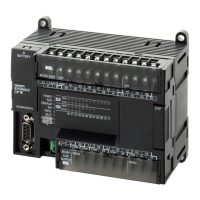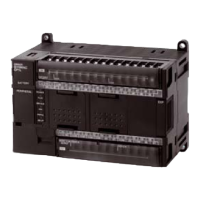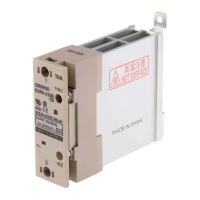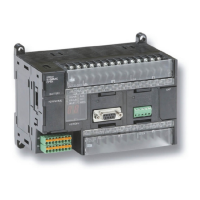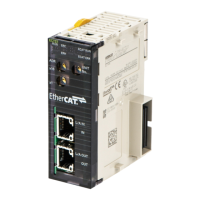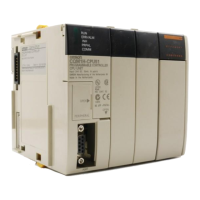13-3
13 SNMP Agent
NJ/NX-series CPU Unit Built-in EtherNet/IP Port User’s Manual (W506)
13-1 SNMP Agent
13
13-1-2 Specifications
When a failure or some other specific problem occurs, a status report called a trap is sent. This enables
monitoring changes in status even if the SNMP manager does not monitor the built-in EtherNet/IP port
periodically. However, traps use UDP. Therefore, you cannot check to see if the SNMP manager
receives traps from the EtherNet/IP port. Thus, depending on the network status, some traps may not
reach the SNMP manager.
The structure of SNMP messages is as follows:
SNMP Traps
13-1-2 Specifications
Item Specification
Protocol SNMP
Agent SNMPv1, SNMPv2c
MIB MIB-II
Port No. SNMP agent: 161 (UDP)
SNMP trap: 162 (UDP)
These can be changed in the Built-in EtherNet/IP Port Settings from the Sysmac
Studio.
Timing of SNMP trap opera-
tion
Status reports are sent to the SNMP manager at the following times.
• When the Controller is turned ON
• When links are established
• When an SNMP agent fails to be authorized
Supported MIB commands GetRequest/GetNextRequest
13-1-3 SNMP Messages
Item Set value
Version This value gives the SNMP version.
SNMPv1: 0
SNMpv2c: 1
Community Community name for verification
PDU This depends on the PDU type.
Built-in EtherNet/IP port
SNMP manager
Trap
SNMP agent
MIB
Controller power supply
turned ON.
MAC header IP header UDP header SNMP message
Variable length (1,472 bytes max.)
Version Community PDU
